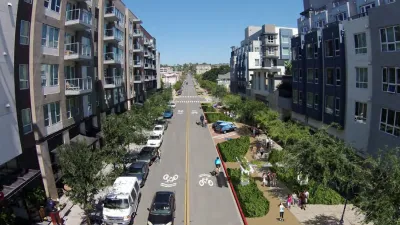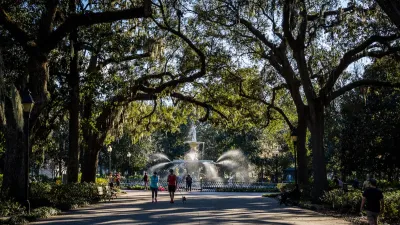Cities are full of ants, mice, rats, and other animals that scavenge on the trash of human beings. A new report from North Carolina State University analyzes how biodiversity influences the productivity of these creatures.
A new study by Elsa Youngsteadt and colleagues at the North Carolina State University published in Global Change Biology analyzes the role of biodiversity in ant species scavenging habits. In particular, the team asked, how much do ants on Broadway and West, mostly a variety known as pavement ant (Tetramorium Species 5), scarf down compared to the much more diverse ants residing in Central Park and 13 other parks in Manhattan?
As Nathan Collis writes on Pacific Standard, by littering in very controlled settings, the team found that ants, insects, and other animals actually ate more waste in the low-diversity median strips than in the parks. The scientists expected, "that the more diverse arthropod assemblages in parks should consume more food waste. Although we confirmed that park sites supported more ant species and more hexapod families than did median sites, park arthropods ate 2-3 times less food than those in medians," as the report stated.
Overall, the scientists research showed "the importance of species identity and habitat characteristics, rather than diversity, as predictors of food removal," an important lesson for municipalities looking to use more natural decomposters in their food waste systems.
FULL STORY: Biodiversity Isn’t Everything in Urban Environments

Study: Maui’s Plan to Convert Vacation Rentals to Long-Term Housing Could Cause Nearly $1 Billion Economic Loss
The plan would reduce visitor accommodation by 25,% resulting in 1,900 jobs lost.

North Texas Transit Leaders Tout Benefits of TOD for Growing Region
At a summit focused on transit-oriented development, policymakers discussed how North Texas’ expanded light rail system can serve as a tool for economic growth.

Why Should We Subsidize Public Transportation?
Many public transit agencies face financial stress due to rising costs, declining fare revenue, and declining subsidies. Transit advocates must provide a strong business case for increasing public transit funding.

How to Make US Trains Faster
Changes to boarding platforms and a switch to electric trains could improve U.S. passenger rail service without the added cost of high-speed rail.

Columbia’s Revitalized ‘Loop’ Is a Hub for Local Entrepreneurs
A focus on small businesses is helping a commercial corridor in Columbia, Missouri thrive.

Invasive Insect Threatens Minnesota’s Ash Forests
The Emerald Ash Borer is a rapidly spreading invasive pest threatening Minnesota’s ash trees, and homeowners are encouraged to plant diverse replacement species, avoid moving ash firewood, and monitor for signs of infestation.
Urban Design for Planners 1: Software Tools
This six-course series explores essential urban design concepts using open source software and equips planners with the tools they need to participate fully in the urban design process.
Planning for Universal Design
Learn the tools for implementing Universal Design in planning regulations.
City of Santa Clarita
Ascent Environmental
Institute for Housing and Urban Development Studies (IHS)
City of Grandview
Harvard GSD Executive Education
Toledo-Lucas County Plan Commissions
Salt Lake City
NYU Wagner Graduate School of Public Service





























